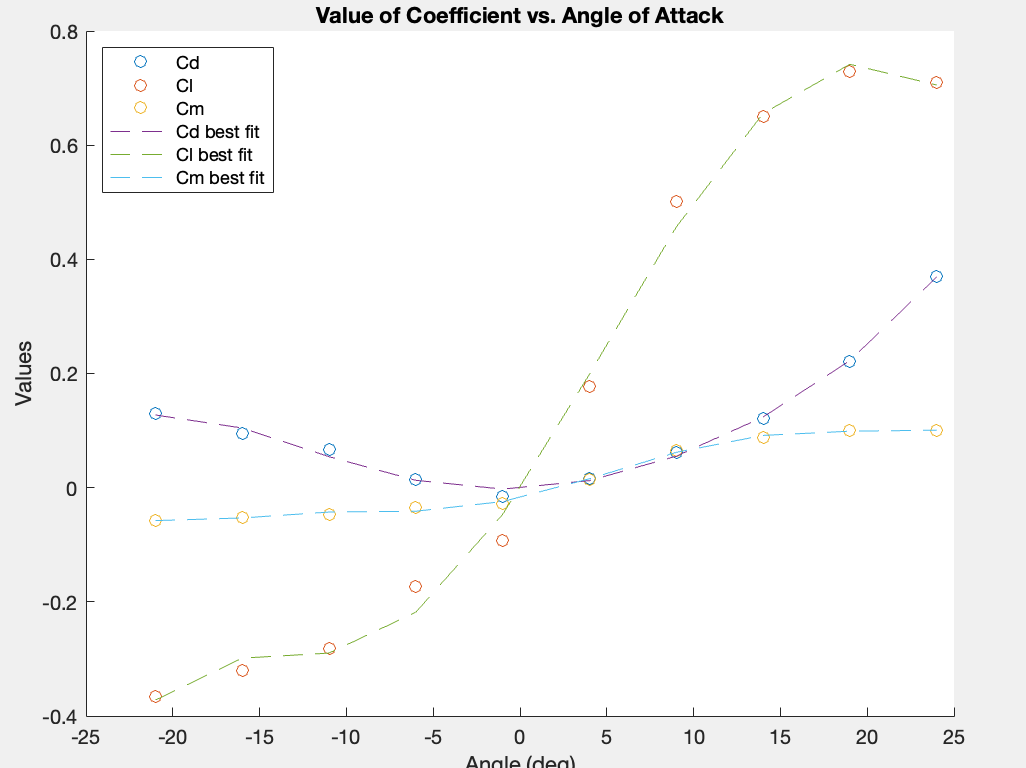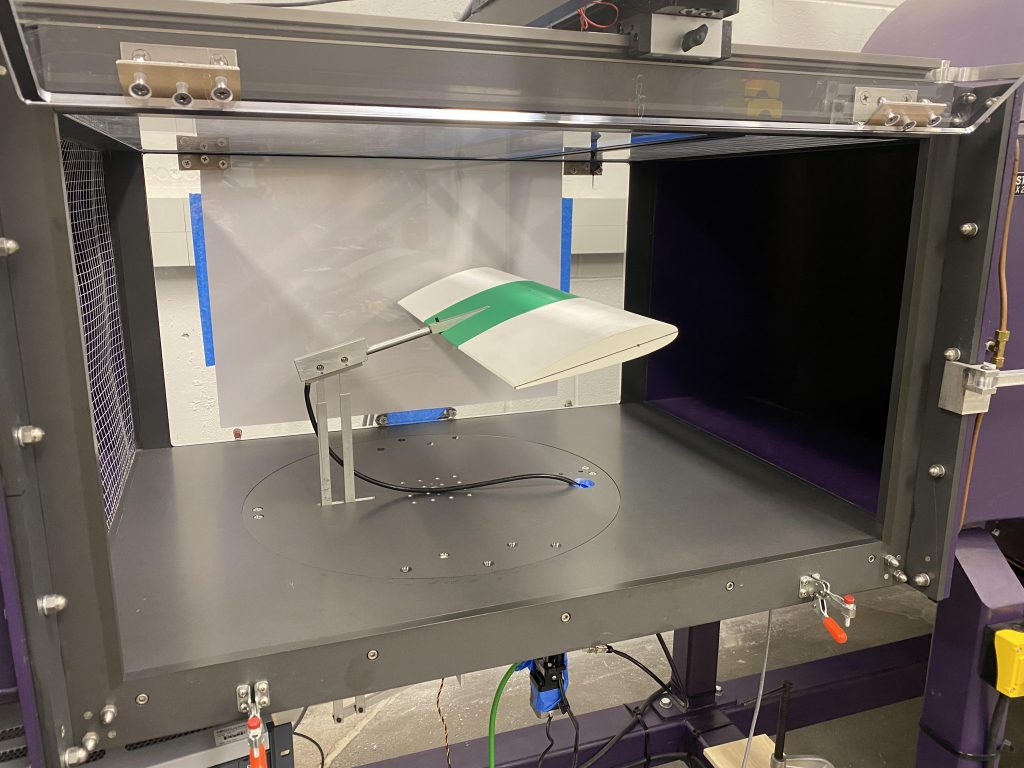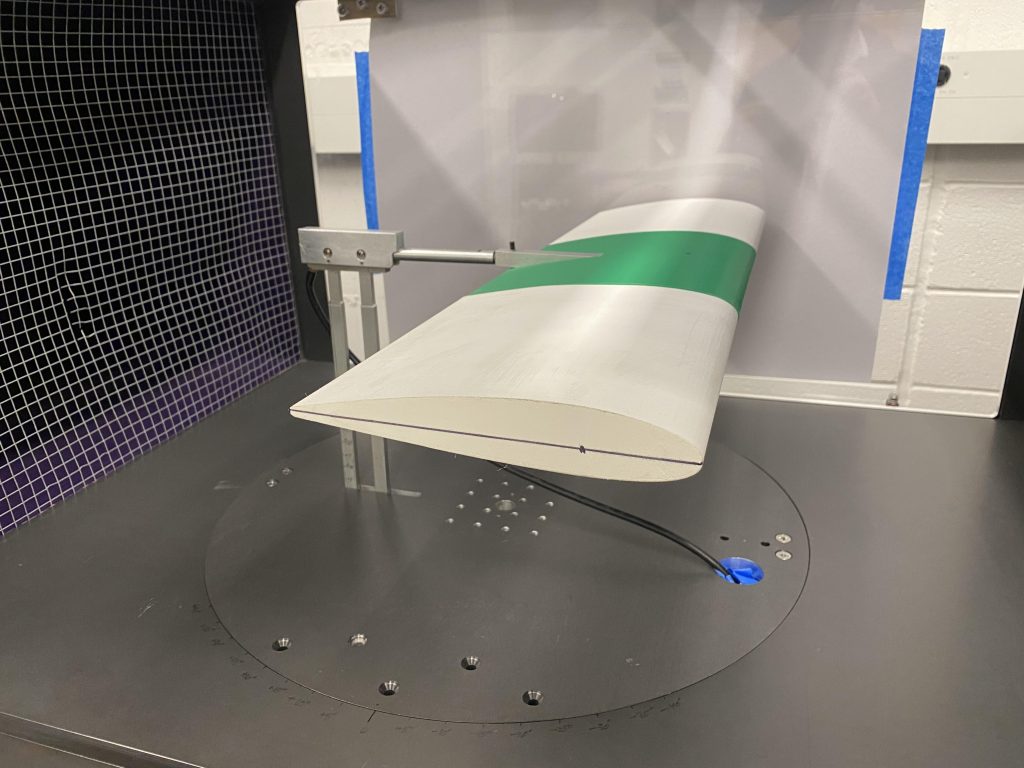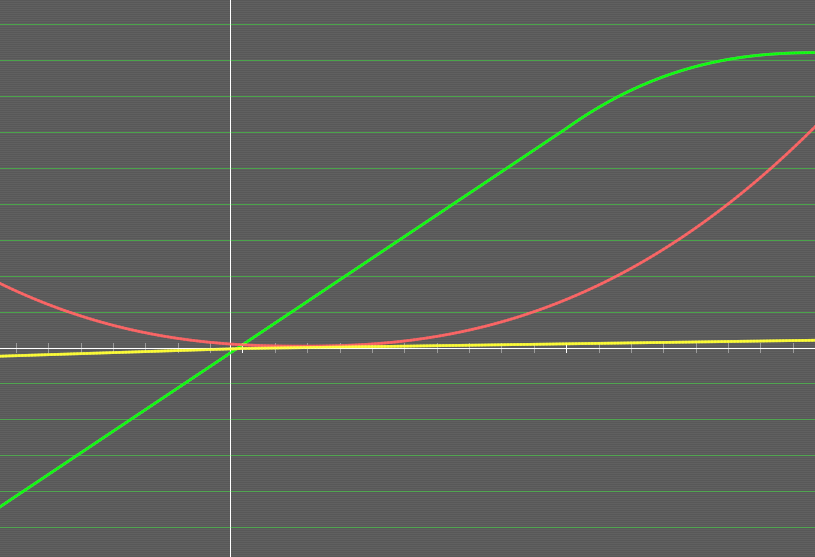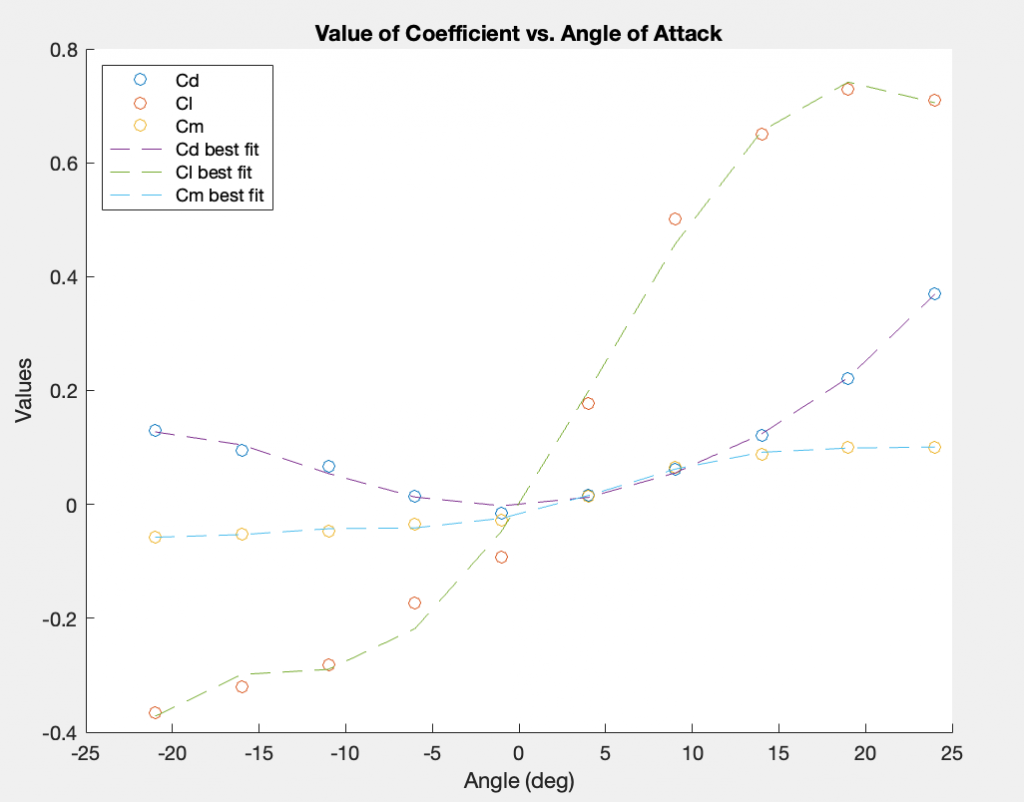Fabricate an airfoil and test it in the college wind tunnel. Plot data. Program our flight sim to use the data from your custom wing. Test fly your experimental airplane. That’s the exercise.
This is all in addition to reading the definitive text on introductory aerodynamics, learning circulation theory, and working through numerous problem sets that describe the Kutta-Joukowski theorem, Prandtl’s lifting line theory, “Bernoullian” lift, and “Newtonian” lift.
Leading up to the final exercise described above, students also followed a set of tutorials in Microsoft Flight Simulator to learn basic airplane control. This encouraged an intellectual approach to air vehicles beyond their wings. Students not only learned how to do aerodynamic calculations and wind tunnel research, but also how to think about the balance of forces across an entire airplane: forces that are required to obtain both stability and maneuverability in flight. They learned to think about torque exerted by an airplane’s ailerons, elevator, and rudder… moments that affect roll, pitch, and yaw… the importance of an airplane’s center of gravity relative to a wing’s center of lift… in short, flight dynamics in addition to aerodynamics.
Says Professor Carr Everbach, “My Aerodynamics course would not be nearly as rich without the Flight Simulator and Jeremy Polk’s ability to guide students in not only using it, but customizing it to fly a Cessna with their own wing design.”
Says the author: Thanks, Carr. My semester would not have been nearly as rich without your Aerodynamics course. I hope the students enjoyed themselves as much as I did.

